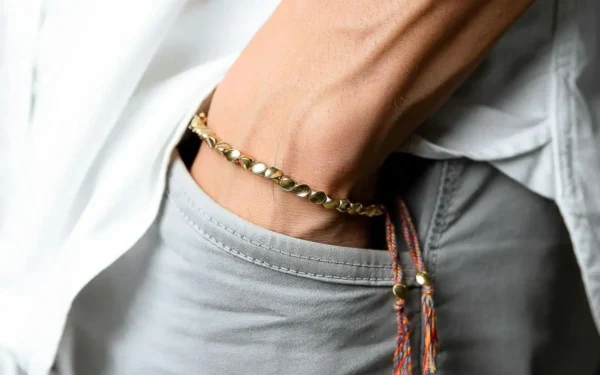Table of contents
Introduction:
Copper bracelets, hailed as a natural remedy, have gained popularity for their potential health benefits. While supporters claim relief from issues like arthritis, it’s crucial to delve into possible side effects associated with their use. This article aims to shed light on both the advantages and risks of donning copper bracelets.
Understanding the Appeal:
Before exploring potential side effects, it’s essential to grasp why copper bracelets have become popular. Copper, a vital trace mineral, is believed to offer antimicrobial properties and health benefits. Proponents argue that wearing these bracelets enables copper absorption through the skin, potentially reducing inflammation and relieving pain.
Alleged Benefits:
Advocates often share anecdotal evidence of improved joint pain, arthritis, and even migraines with regular copper bracelet use. Some also believe in heightened energy levels and overall vitality. However, scientific support for these claims remains limited and inconclusive.
ALSO READ ABOUT: What is Utility Bills? Guide to Understanding Utility Bills
Reality of Side Effects:

Despite potential benefits, copper bracelets pose certain risks. Skin irritation and discoloration, known as copper dermatitis, can occur due to oxidation when copper reacts with sweat. Those with sensitive skin may experience more severe reactions. Copper toxicity, although rare, can lead to symptoms like nausea, vomiting, and liver damage. Individuals with Wilson’s disease, a rare genetic disorder, should be cautious due to their susceptibility to copper toxicity.
Controversy and Decision-Making:
The debate surrounding copper bracelets emphasizes the need for informed choices in alternative therapies. While some find relief, others may experience adverse reactions or see no improvement. It’s crucial to weigh potential benefits against risks, perform a patch test for skin sensitivity, and consult healthcare professionals, especially for those with existing medical conditions.
Conclusion:
Copper bracelets offer potential benefits but come with considerations. Skin reactions, allergic responses, and the rare risk of copper toxicity should be factored into decisions. Making informed choices, based on scientific evidence and individual health considerations, is essential in navigating the complex landscape of alternative therapies.



